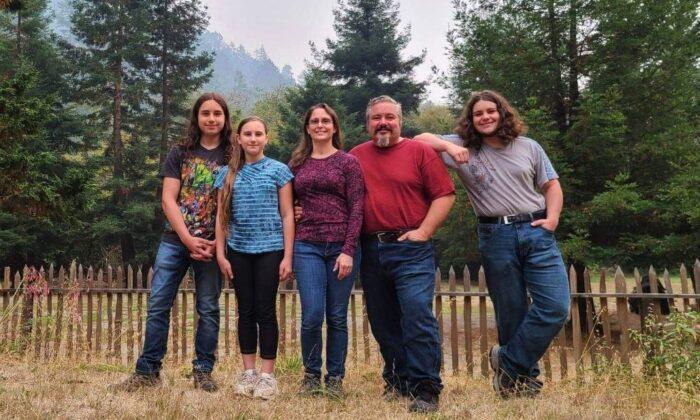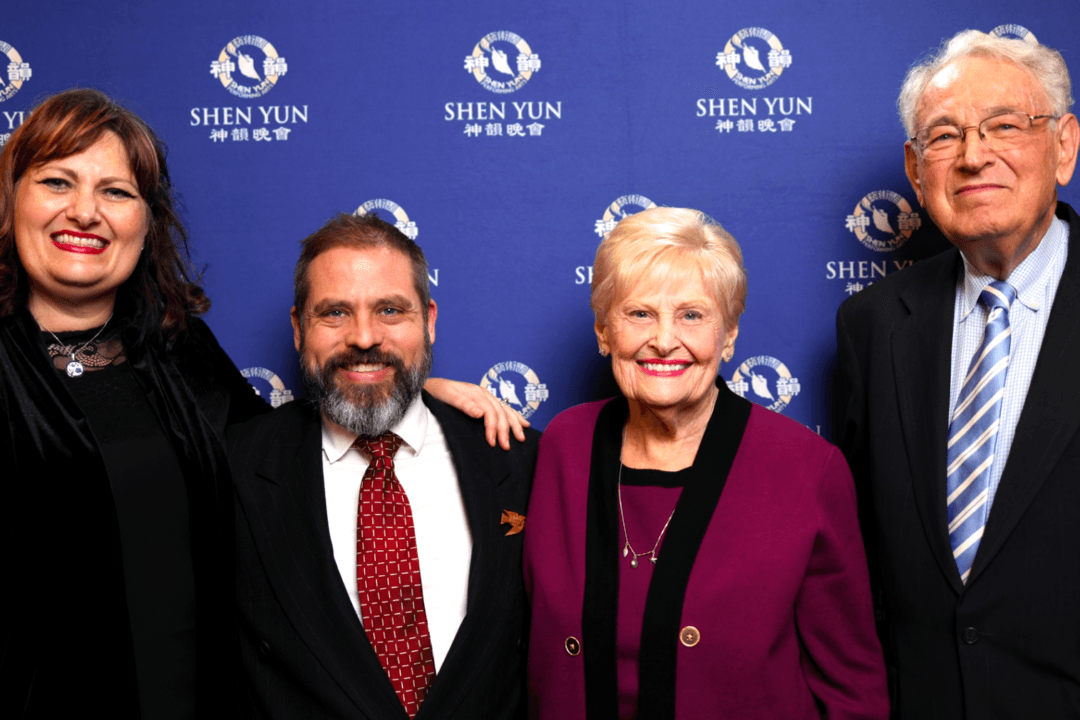A family in Pescadero, a small town near California’s coast, defended their home from fire for roughly a week and a half before evacuating due to falling trees.
The CZU Lightning Complex wildfire started mid-August when lightning storms hit California. Fire spread to Pescadero and became visible from Shawnie Coffey’s backyard.
She and her family knew it would reach their property.
‘Household Hoses and Sprinklers’
An evacuation order was given on Aug. 18 for Coffey’s neighborhood, which is at the bottom of a canyon.Coffey, her husband, and her children—ages 11, 14, and 18—wanted to stay and protect their home. Their neighbors didn’t want to leave either.
A neighborhood team of about 30 people assembled. It was led by three people: one with firefighting experience, one who was in charge of their water system, and a coordinator.
Coffey’s family spent the next four days removing small trees, bushes, and dead branches to make a fire break at the edge of their yard. Then they ran sprinklers all over the yard and roof.
In the days before they could see the fire, they had watered for a few hours twice a day. A nearby creek was their source of water.
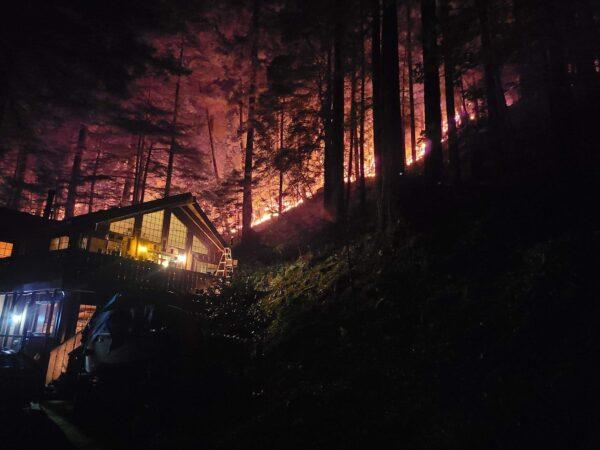
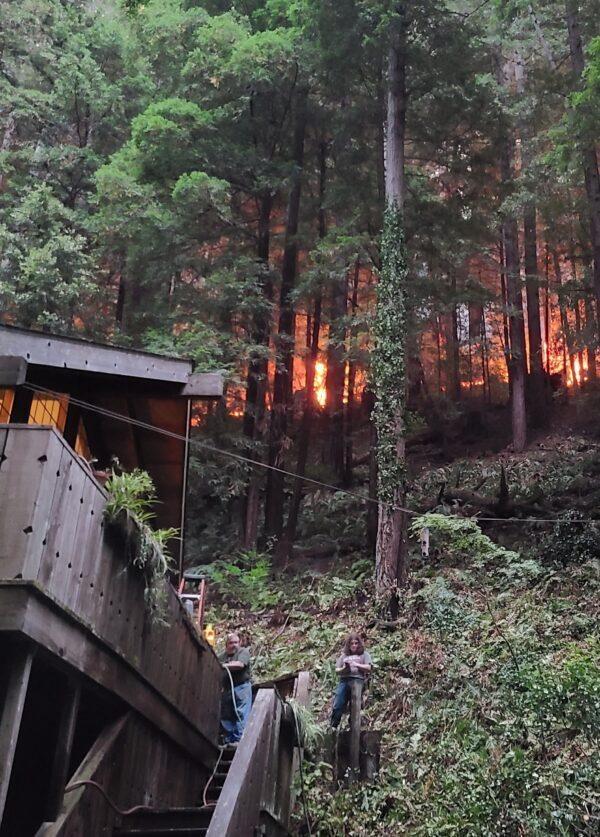
The Coffeys slept in shifts. Coffey’s eldest son took the first night shift and didn’t go to bed until someone else woke up in the morning.
Coffey said her husband, Ed Coffey, has had fire-maintenance training.
“On that first night of fire in the backyard, a burning piece of wood the size of a bowling ball came bouncing down the hill toward my house. It came to a stop at our retaining wall, in a puddle left by the sprinkler we had put on the roof,” Coffey said. “Our technique worked well enough to free most of us up to help other neighbors prepare.”
Coffey said there were 80 homes in the neighborhood. Her family was taking care of their own home and the house adjacent to them.
A handful of firefighters spent a few hours at her neighbor’s house when the fire first arrived.
“As soon as they left, it was up to me and my family to be sure the fire was fully out,” Coffey said. “We had to check every few hours for a couple of days to be sure that my next-door neighbor didn’t lose his house.”
Coffey was relieved that her family was the first to extinguish their fire. They were able to help others prepare for their own backyard battles.
“It crawled across the ground like a slow-moving lava flow,” Coffey said. “That was what made it so easy for us to fight. If it had been a full-on tree fire, then none of us would have stayed.”
The fire came on only one side, so fewer than half of the homes were at risk.
“It was very satisfying being able to put out a lot of it with household hoses and sprinklers,” she said.
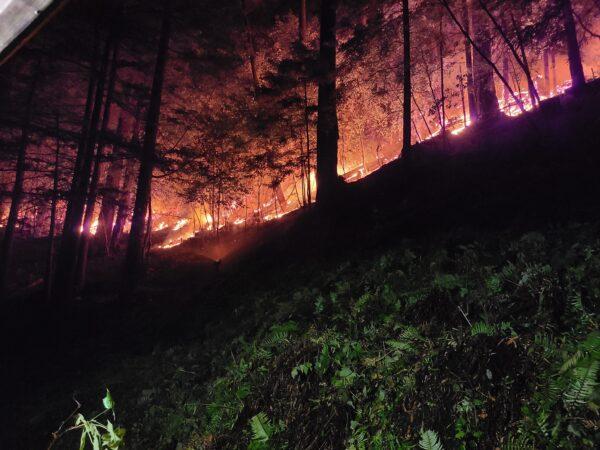
Evacuation
Firefighter trucks were present as the fire came closer to their home.“They were very impressed with us—with the neighborhood group—because of how much clearing and preparation we had done,” Coffey said.
She said the power turned off in their neighborhood on Aug. 27.
The forest in the area mostly contained redwood trees, which have thick, fire-resistant bark. However, they may fall over if the roots get damaged. A house near Coffey’s had its roof split apart when a tree fell on it.
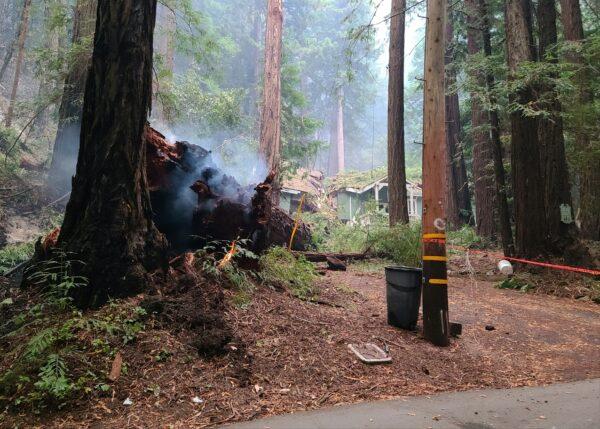
Due to the danger of more trees falling, Coffey and her family evacuated to a location two miles away from their home, which is close enough for them to check in on their exotic pets. They have fish tanks that cannot be moved, snakes and lizards that need different temperatures and humidity, spiders, four scorpions, a frog, a bird, mice, and two cats.
“A lot of [the pets] are just difficult to move, so that was actually a big portion of our motivation to stay and protect the house,” she said.
The Coffeys have lived at their house for six years. They are waiting to find out when they can return home.
“This fire has certainly brought the neighbors closer together. I know more of them than ever before,” Coffey said.
